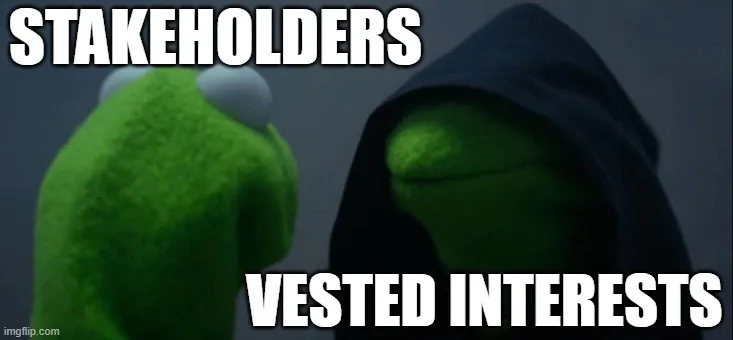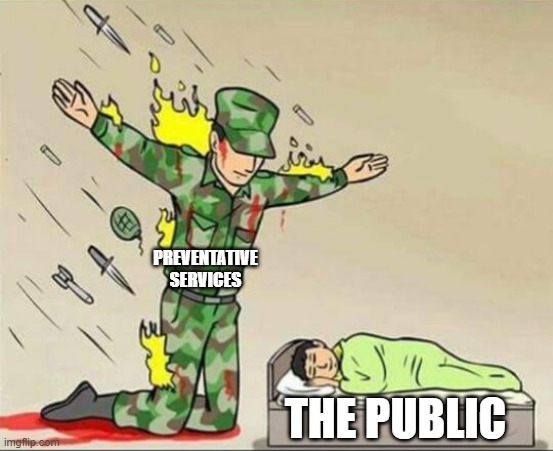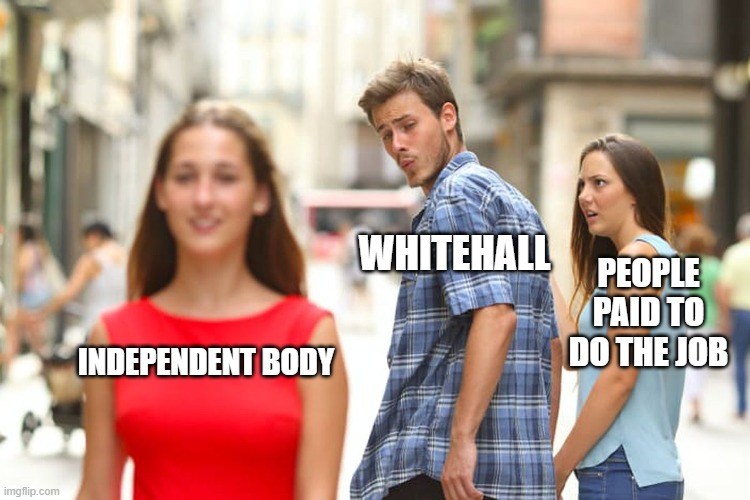Policy memes (and where to find them)

Policy Director
Richard Dawkins coined the word ‘meme’ in 1976 to describe ideas, behaviour and styles that spread within a culture. But like the phenomenon it describes, memes took on a new life in the Internet age — powered by Drake, Sean Bean and Spiderman.
Dawkins himself recognises that internet memes evolve more quickly than ideas did before the Internet, and there are not always similarities. But an undeniable characteristic of a successful meme is that it can take on wider meaning than it originally had — reinforced by the different contexts it is applied in.
Some of the most powerful political ideas in Westminster are memes — or at least, have memetic qualities. It may be hard to define, but ‘levelling up’ definitely struck a chord, and cannot be avoided when discussing the economy. Brexit had a clear(er) definition, but also contained a broad tent of ideas which still influence the debate.
If political memes are the tip of the Westminster iceberg, then beneath the surface are policy memes. Less salient with the general public, policy memes are a key part of discussion between professional policymakers. Like all good memes, they have a clear reference point (in something most people would agree on), but gain wider meaning from the contexts they are used in — and often conceal as much as they reveal.
1. Stakeholderism

One of the first words I learned as a 21-year old official was ‘stakeholder’ — the people with an interest in what you are working on. Policymaking puts a premium on getting their views, and for good reason. If you want to change policy, you need other people’s help — to get the right ideas, to put them in motion, and sometimes to have your back when other people criticise it.
But Whitehall is also prone to stakeholder capture, by becoming too reliant on the insight or support of groups who also have vested interests in the status quo. Relying on universities to consult about the future of science policy, for example, is not good if the university research model is actually part of the problem. Or relying on groups like the National Education Union to represent frontline workers, when the users of those services (e.g. parents and teachers) don’t have the same organised pressure groups to influence government.
2. Early intervention

Whilst government may not have fixed the roof while the sun is shining, the logic is obvious. Public health and social policy has a wealth of research demonstrating that it is better (and cheaper) to prevent people from going ‘off the rails’ earlier in their life. There are undeniable benefits in health treatment, and plenty of research on how Adverse Childhood Experiences (ACEs) lead to worse social outcomes. Mentioning this is sure to get you lots of approving nods in a working group, and is almost mandatory in a White Paper.
It is right to call for more investment in preventative services, but it is also easy if you are not having to balance the books and make sure crisis services do not fall over whilst you manage a transition. And the evidence base is not strong enough to justify preventative approaches everywhere — there is clearly a link between ACEs and worse outcomes later in life, but the research into interventions which can break that link is less developed.
3. Cross-departmental working

In quangos, select committees, think tanks and even government reports, criticising the State for operating in ‘siloes’ is mandatory. And they are not wrong to — many areas of policy fall through the cracks. They are everyone’s responsibility, so they are no-one’s responsibility. There are good examples of where this criticism has led to change and influenced government strategy: Mark Sedwill’s interest in ‘Fusion doctrine’ was a key pillar behind our national security strategy, by sharing goals across foreign policy departments.
But pointing out the truism (much like ‘prevention would be better than cure’) that we need more cross-departmental working is not enough — we need solutions. Historically, the meme implied that we needed more investment in cross-government projects. But despite the Treasury allocating hundreds of millions for investment in joint projects through the Shared Outcomes Fund since 2021, Cat Little admitted in recent evidence to PAC that they were disappointed in the shortage of bids for it. Perhaps the issue with cross-departmental working is a shortage of leaders willing to work transparently across vertically-integrated departments. Or may be we have too many departments. Or perhaps the whole SR model which allocates most public funds to individual departments is at fault.
4. Get someone else to fix it

When a policy team has run out of ideas, you can be sure to see some variant of this meme rear its head. The ongoing work of fixing the policy problem is handed over to another entity — an independent reviewer, commissioner, committee, body, regulator, tsar, or a newly-branded unit within the civil service.
Scrutiny and ideas from outside the civil service is a very good idea, as are a diversity of perspectives — we discussed this in a recent report on scientific advice in Whitehall. But too often this is an excuse for avoiding bringing that talent into government directly, avoid genuine devolution of services, or to pass the heavy lifting on an issue to someone else — the meme allows us to avoid these fair challenges.
What next for policy memes?
As we look to the future of policy, what will the next generation of memes be? My contender for 2024 is AI. AI is unavoidable in politics now, and sure to stay for the foreseeable future. Like a good meme, its salience is based in truth — 2023 showed the world that this technology is incredibly powerful. But for AI to keep pace with the power of the policy meme it has become, it will need to show how this power can benefit government, measured in months and not years.
Ultimately, policy memes are here to stay. It is unavoidable that good ideas will be built on, even if it is sometimes for the wrong reasons: as a status signal in the policy world, a convenient way to dismiss an issue, or avoiding accepting our own failures. We can push back on the lazy thinking involved whilst giving them credit for the essential truth within.
